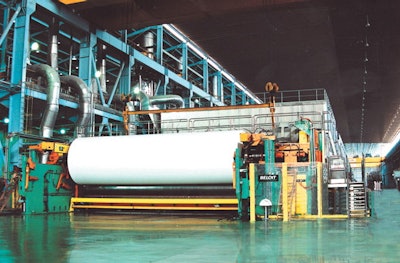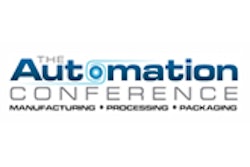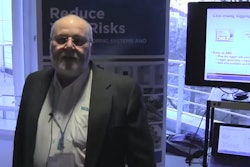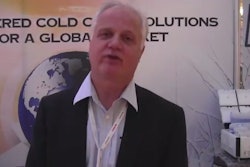
Asia Pulp & Paper (APP) is the world’s third-largest paper company, with 12 major facilities and a number of smaller operations in Indonesia and China. The organization has a current annual combined pulp, paper, and packaging-grade capacity of more than 15 million tons per year, and markets its products to more than 120 countries across six continents.
In June 2012, APP released its Sustainability Roadmap 2020, which the company says aims to put conserving Indonesia’s natural resources at the heart of APP’s strategy. The past year has also been one of significant investment by APP in papermaking machines that have been optimized to be faster, cleaner, and greener.
In this exclusive interview, Greener Package speaks with APP-Americas’ acting president, Terry Hunley, and sustainability officer Ian Lifshitz about the company’s sustainability strategy, new investments, and response to the public criticism it has received from Greenpeace regarding its fiber-sourcing practices in Indonesia.
Greener Package: Looking at your customers globally, how much interest is there currently in recycled-content paper for packaging applications?
Terry Hunley: It varies significantly from market-to-market and application-to-application. But in general, recycled content—especially here in the U.S.—is typically not the first criteria in selecting paperboard. Customers are more interested in the technical aspects of the paper and how it performs in their application. The second most important criteria is usually the overall cost of the paperboard. Then the recycled content comes third. If the paper has recycled content in it, that’s just an added benefit, but in most cases, I wouldn’t say that it is the major driver for the paper selection. In some cases, yes, but I would say in most cases, no.
Greener Package: When your customers come to you for more sustainable packaging, what factors are important to them in selecting a paper product?
Hunley: There are a lot of factors. There is literally just the gross amount of packaging being used—how much packaging do they actually need. And while that is heavily dependent on the packaging design, some of that is actually determined by the physical characteristics of the paperboard being used. They may want to design some of the weight out of the packaging. There are also the visual properties of the packaging—its printability, its brightness, its shade, things like that—and whether the paperboard is from plantation fiber or not. Then of course, there is the recycled content. So there are a lot of factors that go into determining whether packaging is “sustainable.”
Ian Lifshitz: Looking at sustainability, retailers, vendors, and buyers have to look beyond just recycled content. When you look at things like plantation fiber, or fiber that comes from Indonesia, in the equatorial band, it can be grown and harvested again in six to eight years. So that is truly a sustainable product that produces a virgin material. It’s a different way of looking at sustainability. If you look at the term we have coined, it is “rapidly renewable fiber,” so fiber that can grow again and reprocess, almost similar to a crop.
[Editor’s note: Plantation-only trees from Southeast Asia are highly renewable and sustainable due to the region’s tropical climate, which is optimal for accelerated grown and shortened maturity cycles. Acacia and eucalyptus trees can be grown and harvested (in the same manner as crops such as corn and wheat) in less than eight years in Indonesia, compared to 50 years in North America. According to APP, younger fiber also absorbs carbon more quickly than older trees.]
Greener Package: Is there a process that you have to go through with customers to educate them about that aspect of sustainability and the source of the material?
Lifshitz: Yes and no. Customers see the value of plantation fiber, and they recognize that. I think there is a lot of noise in the marketplace for recycled content. So, its about 50:50 between when you start to talk plantation and looking at the value that it brings to an end user. They understand that concept pretty fast, because using the virgin material creates a clean, white, printable surface more so than say a recycled brown. So when you have your clean, white, printable packaging material, and it’s still sustainable, that value is pretty inherent and understood pretty quickly by most customers.
Hunley: Recycled papers also have some downsides in certain applications. So with things like food, if there is direct food contact, are there extractives that can leach out of the recycled paper into or onto the food? There are a lot of these issues involved in selecting the right paperboard and in making sure that the paper supplier not only offers a sustainable package but one that does the job.
Greener Package: In talking about your papermaking equipment, are there specific plants where you’ve made the bulk of your investments in acquiring more efficient machines?
Hunley: Just overall, if you look at the level of technology used in paper production, APP is far and away the most technologically advanced paper company on the planet. Our equipment is newer. It is more efficient, and it is actually more environmentally friendly, when you take in the whole picture of energy consumption, water consumption, water cleaning, and the chemicals that we have to use. Our facilities are literally the most modern out there right now.
In terms of our investments, the majority of investments over the last 10 years or so have been primarily in China, in both the printing and writing and the paperboard area. One of our more recent machines was the coated paper machine on the island of Hainan [Hainan Jinhai Pulp & Paper Industry Co., Ltd.], which is attached to a brand-new pulp line as well. I think it may the largest single pulp line in the world. The paper machine itself is the largest coated paper machine in the world, using the latest technology (see pictures). It is literally I think the largest piece of man-made equipment I have ever seen! You walk through the door and it’s like seeing the Titanic sitting inside the room.
The other thing you will notice about the paper machine is how few people there are actually in the area with the machine. It is controlled from a control room with six to 10 people in there at any point in time. Literally, the way the machine was designed, the scale of the machine, the controls on the machine, helps to make it the most efficient coated papermaking machine in the world. In addition, because we are talking about packaging, we have a brand-new paperboard machine coming on line. Actually, I believe it has either started turning or will start turning any day now in Guangxi [Guangxi Jingui Pulp & Paper Co., Ltd.]
That is also, I think, one of the largest paper machines in the world. It has 1.2-million-tons rated capacity. It’s the same type of situation—it uses the latest technology. It enables us to make products much more efficiently. It also allows us to make much more tailored products in that it is a multilayer machine, and we can put different materials in different layers to create an effect that you just can’t get with materials like solid bleached, where it’s only a single layer.
Lifshitz: When you look in terms of investment, those are the two latest and greatest. This is recent investment. When you look in the U.S., I can’t recall the last major investment we saw in a papermaking machine. But APP and other Asian companies continue to invest and grow and to develop and implement these machines that are far surpassing anything else that we are seeing in different markets. Its technology is greener, and it is newer and safer technology.
Greener Package: To what do you attribute your ability to invest in such state-of-the-art technology?
Hunley: There is more investment in this technology going on in Asia than in other parts of the world primarily because the Asian markets are the ones that are growing the fastest, so you want to have those machines there, making products in those markets that you expect to continue to grow. What enables us to do this is, because the market is growing, we can always put in new capacity. And, as we are now the largest paper company in terms of paper and pulp production, we have the resources to do it—both in terms of the financial resources as well as the technical and the downstream resources to ensure that that paper machine gets properly integrated into the market.
Greener Package: Could you talk a bit about the technology used on these new machines that makes them more flexible and efficient? Also, who supplies your papermaking equipment?
Hunley: For a lot of our machines, there are multiple suppliers that provide the various components. I would say that what we call the “wet end” of the machines is probably the most critical. We use the expertise of various companies, and Voith is one of our favorite suppliers there. But there are different parts of the machine and different suppliers for those machine parts. We even have the capacity ourselves to build some pieces of the paper machine.
In terms of what makes these machines more efficient, more flexible, almost all our machines are multilayer machines, especially on the paperboard side. As I said earlier, it enables us to both create products that are more specific to applications, and it enables us to use different materials in different parts of the paper. For instance, if you look at recycled paper out of a single-ply machine here in U.S., you have to be very careful about how you treat the recycled pulp going in. You then have to be concerned about how many black spots you will see in the paper as a result, and again, direct contact with whatever it is that you are putting in that package. In our machines, with the multilayer approach, we can actually sandwich the recycled material between let’s say, two virgin Kraft sheets, so that we can contain the recycled material in-between the virgin sheets. So, literally you have a surface that looks as white and as speckle-free and spot-free as a regular SBS, but you may have 20%, 30%, 40%, or 50% recycled content inside that sheet, so it allows you to create a more sustainable package. Because recycled pulp is less expensive, that package is usually a very good value.
In addition, the controls on our machines enable us to vary the inputs. Let’s say we are using chemicals from BASF one day and then Dow Chemical comes up with a good product for another set of chemicals. So even though we have some inputs from different manufacturers that differ, the output of the machine stays constant. That has to do with the sophistication of the controls that we have on the machines. Most U.S. and European manufacturers essentially try to keep the inputs constant; that’s how they manage the output of their machines. This gives us a lot more flexibility in sourcing for the raw materials going in.
Lifshitz: On the newer machines too, we are investing in new equipment because it is a greener technology. When you look at our machines comparable to the others in the industry, we have lower carbon emissions, lower wastewater programs, and things of that nature. So we really are taking a leadership role on the environmental front as well with the new machines.
Greener Package: How flexible are multilayer machines in changing from one type paper type to another? Can you do shorter runs with these?
Hunley: Again, the technology on the machine allows us to make very fast changeovers. In some cases, we can change the machine over in a matter of minutes, whereas I know some machines in U.S. can literally take a day just to change from one grade to another.
Just to give you an idea, if you look at the machines in the U.S., a big machine, actually one of the latest-generation machines in the U.S., will produce somewhere between 300,000 or 350,000 tons of product. After those machines were put in place, the next generation was 500,000, and the next generation was approximately three-quarters of a million. The next generation—I think we are one of the only companies that have them—are the million-ton machines, and we are now graduating into machines that are making a million plus. The new machines that are going in are at about 1.2 million I believe. Hainan was about 1.5 million. Our machines are about three generations more advanced than what you will find in the U.S. That size and scale and flexibility and low environmental footprint and efficiency give us some very distinct advantages in marketplaces around the world.
Greener Package: How does having machines with a lower environmental footprint benefit you as a company? Is it a marketing advantage? What financial advantages do you see with these? And, what’s the driving factor for wanting more environmentally friendly machines?
Lifshitz: It’s a philosophy overall within the organization. Our mission is to become the premier pulp and paper making company and to do that as sustainably as possibly. So it’s got to be an approach that crosses over all of our business, including the way we manage our plantations, the way we work with our supply chain, the way we look at chain-of-custody and various certifications, and the way we run our mills and operations as well. So if we are going to demonstrate a true commitment to sustainability, it’s got to cover all elements of our business from start to finish. It touches on the Green Cycle, which is a philosophy we adhere to across our entire business, which is about operating close to plantations, mill sites, reducing carbon emissions on transportation, reducing wastewater outputs within the communities in which we operate our mills, and looking at social and environmental programs as well. It’s something we take very seriously.
Hunley: From a business perspective, it’s actually good business. Cleaning our wastewater, recovering chemicals, and recovering heat, or energy, allows us to lower our overall net costs. So keeping everything that we can inside the walls of the mill is actually good for our business.
From a marketing point of view, companies like to work with other companies that share their values or that they feel comfortable with. We have actually taken customers to our Gold East facility [Gold East Paper (Jiangsu) Co., Ltd.], and in our wastewater ponds we have Koi fish. They live in the wastewater. That’s how clean the water is. Actually I think the water coming out of our facility at Gold East is actually cleaner than the water going into the facility.
Lifshitz: We in turn use that for our local agricultural programs and community programs as well. So there is really a multiplier effect to that. Same thing with power too: We reuse black liquor. We look at our biofuels as a result of the production process, and we use that to run our own plants and our own facilities. But in turn, we also use that to support the local communities with power as well.
Greener Package: You have received a lot of criticisms from Greenpeace. Among them the claim that APP was illegally harvesting the ramin tree species in Indonesia, another that you are participating in deforestation and driving Sumatran tigers to extinction. What’s behind these criticisms? How do you address them?
Lifshitz: Those claims made by Greenpeace around the use of ramin were completely false. The Minister of Forestry in Indonesia has cleared us of any wrongdoing. The use of ramin and the ramin that was found [by Greenpeace] actually shows that our systems in our chain of custody actually are in place and working. The materials that were identified by Greenpeace were actually in a quarantine area within our mill location where they should be, until a penalty against the wood supplier could be determined.
With respect to the claims of deforestation, as a company, we have recently announced our Sustainability Roadmap for 2020, which is our guide and direction for sustainability, moving forward to 2020 and beyond. As part of that, we announced in February [2013] an immediate halt to all natural forest clearance, by both AP&P and its suppliers. In addition to that, we have announced that we are going to be solely dependent upon 100% plantation fiber by 2015. We also have announced that we are going to be conducting new, High Conservation Value Forest (HCVF) assessments of our lands to determine that they are low-value forests or not primary forests.
So if you look at it from a deforestation perspective, we have announced we are going to stop clearing any natural forest today, we will conduct these new HCVF assessments to ensure that no high-value forest is being used, and we have announced that we are going to be 100% reliant on plantation fiber by 2015.
We have also announced that we have asked our independent suppliers—the other suppliers bringing our wood in outside of our control—to conduct the same HCVF assessments as we are doing. We have given them a deadline to complete those by the end of 2014. So we are moving forward in the best possible and sustainable manner that we can between our own business and our suppliers’ businesses as well.
There is this myth out there in the marketplace today that Indonesia is the Wild West, that any company like APP can go in and start destroying the rainforests. That simply isn’t true. Any land that’s been granted in the past or even today to APP as a concession is granted to us by the Indonesian government. It is not just APP saying we are just going to clear these 100 hectares. This land goes through extensive assessments by the government to determine that it is low-value or not primary forest, with no endangered species or protected areas. Once that is determined, it is granted to a company such as APP as a concession that can be used for pulp and paper. But in turn, we at APP do our own assessments to determine that it is not high-value land that is being utilized and look at the land for other things like animal corridors for tigers or things of that nature to ensure that tigers or animals can still access the river, to ensure that we are planning and we are harvesting according to the laws, according to the natural habitat, and that we are maintaining as much natural or required primary forest as possible within the process.
The land that’s granted to us is really only considered degraded or denuded land or land that’s been previously logged over or damaged.
Greener Package: Why do you think Greenpeace has targeted APP?
Lifshitz: We agree with Greenpeace in many ways. We are committed to preserving natural forests at the same level that they are. I think it’s a matter of coming to a mutual understanding that the way we are moving forward is the best possible, sustainable means possible. We see a big picture. We see that we have to create jobs, we have to create economic opportunity and not just preserve the forests. If you look at our organization, APP in Indonesia alone employs 70,000 people. We are committed to community development, program development, and social development that goes beyond just preserving the forests. We have to look at a country that’s a developing nation, a nation that has roughly 35 million people living below the poverty line, trying to create economic opportunities and leverage their natural resources to do so. And you have an opposing group like Greenpeace that says, “Wait a minute! Preserve the forests!” So there has got to be a balance. Indonesia is facing that struggle on a day-to-day basis, trying to balance social, economic, and environmental priorities.
Greener Package: What are some of the challenges in becoming wholly reliant on raw materials from plantations by 2015?
Lifshitz: The challenge is that because we work with the government, it’s about balancing their development goals with our priorities as well. In addition to that, it’s also about working with our independent suppliers. As I said earlier, on land under our control, we have now implemented a moratorium on clearing natural forests. The challenge is working with our partners to get them to implement the same moratorium. We are not their only customer—there are government commitments, and there are other elements that have to be considered as well when ceasing operations.
Hunley: From an operational point of view, the main challenge is just making sure that you have plantations that are turning around enough fiber to support your operations. But, we look at it as a major, major benefit to source our product from plantation fiber, because we can control the variability much closer. Therefore, we continue to refine the overall system to a much tighter degree. It makes everything much more efficient. So from an operational point of view and an economic point of view, we want our fibers to come from plantations. It just makes everything a lot easier, more cost effective and environmentally more sustainable.
Lifshitz: It’s a steady supply of fiber that’s renewable, and rapidly renewable for that matter, that we can depend upon. We work on a six-year harvesting cycle in Indonesia.
Greener Package: Are there any issues that I haven’t touched on that you think are important to understanding your company’s sustainablity philosophy and some of the investments you’ve made to be more sustainable and to provide the best paper product?
Lifshitz: I think we hit on the key areas from a sustainability standpoint. It’s important to understand that we are not employing these strategies because of pressure from Greenpeace. We are moving in this manner, in this way, because it is good business, because it makes sense to do what's good for our business and it’s good for the environment. And, as a company that is one of the largest employers in Indonesia, working in the rainforest, we have to have that commitment. We have to demonstrate our compliance beyond national compliance to ensure that we are producing the most environmentally sound product that’s renewable in our industry. That’s something that we are very proud of as well.
Hunley: I will just reiterate what Ian said. As a company, we rely upon the environment and the products from natural sources much more so than almost any other company. It makes good business sense for us to make sure that we protect, preserve, and actually improve on the environment that we are operating in—it is better for our raw material supply, it is better for our overall efficiency, and it is better for our financial results.

























